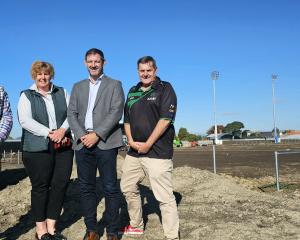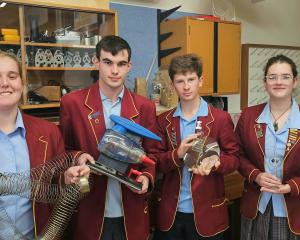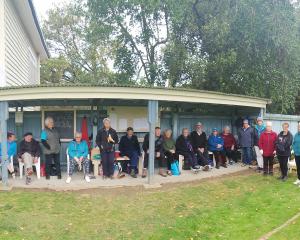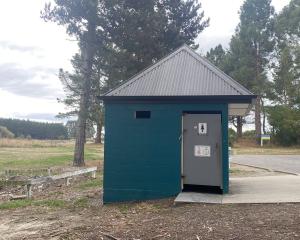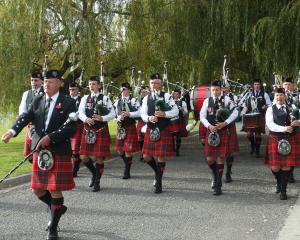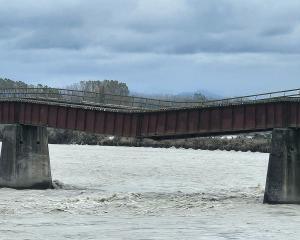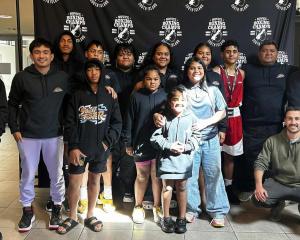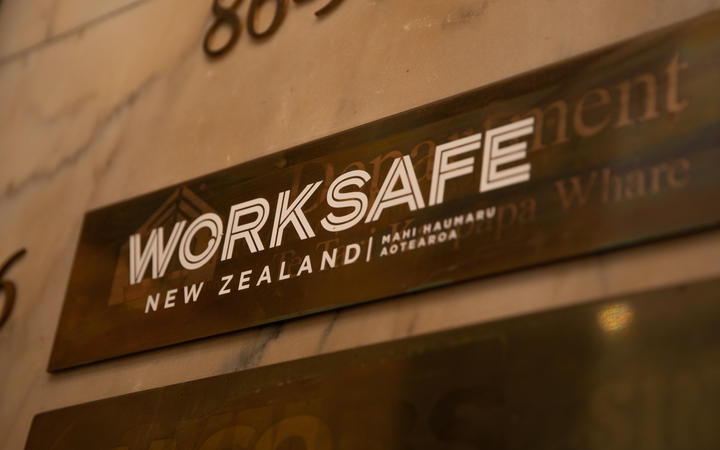
A food delivery truck veered across three lanes and hit the hatchback of 31-year-old Waimate woman Kellyanne Pattinson near Timaru in January 2018.
Police did not charge the truck driver and WorkSafe did not probe the accident. The police did ask questions about driver fatigue and working hours, but arrived at conflicting or inconclusive answers.
"There's just so many unanswered questions," said her mother Helen Pattinson, of Lauriston.
"The key one was: there was no health safety or workplace report done."
Another family, who went through a similar experience with WorkSafe, said the lack of investigation was "disgusting" and a threat to road safety.
The Pattinson family were now pinning their hope for answers on an inquest, but have not been told if there would be one.
They did not think the police had investigated properly or communicated well what was happening.
"They just blame the condition of the road," Pattinson said.
When they failed to get the case reopened once the six-month time limit to prosecute under the Land Transport Act had passed, she rang WorkSafe.
She asked a manager about using the Health and Safety at Work Act.
"He told me that because the police are a higher authority, they deal with road crashes."
In a follow-up letter that December, WorkSafe repeated it was a case of either-or.
"In the circumstances where two legislative regimes are involved ... a decision as to which regulator will investigate an incident depends on which legislation is more applicable," the head of specialist interventions Simon Humphries wrote.
For road crashes, this was the police.
However, his letter did not mention that in the WorkSafe agreement with police on investigations it was noted that "often both parties will investigate the same incident, although at times with a different aim or purpose".
"We didn't know that," Pattinson said.
"We assumed that no matter where you worked, that WorkSafe do investigate.
"We are a bit shocked and stumped about why they didn't do that."
The WorkSafe-police agreement repeatedly stressed "collaboration" and "co-ordination" between their investigations to improve safety.
In a statement to RNZ, police said that "workplace health and safety was not determined to be a relevant factor" in the crash.
WorkSafe was not required to investigate "because it was a police serious crash investigation".
WorkSafe issued a one-line statement to RNZ: "WorkSafe understands that NZ Police are responding and we have no comment to add."
The police crash analysis, by a constable who had analysed more than 170 fatal crashes, said speed, fatigue, alcohol and vehicle condition were not factors - but also said "this crash is probably attributed to a mechanical, roading or driver input issue".
It said little else about what was a factor, other than that the road surface was in "a poor state of repair" and wet at the time.
It had been resealed two months before, and the lane the truck was in had some bleeding of the tar on it.
The analysis offered no evidence for why fatigue was ruled out.
By contrast, a separate four-page report by the police commercial vehicle safety team said fatigue was not excluded as a possible factor.
"Shift start times of 4am, as in this driver's case, will always be a risk factor for fatigue," the CVST report said.
Other risk indicators of fatigue, such as a lone driver, were also present.
The crash occurred about 2.30pm. The driver took a legally required break during the day.
From the documents, it is not clear why the crash analysis does not refer to the CVST notes about fatigue.
After the crash, Bidfood Timaru reviewed its fatigue management and start times, and installed fatigue-monitoring machines in three trucks, the CVST report said.
It noted several minor worktime and logbook breaches by the driver before the crash.
Only CVST officers are allowed to conduct investigations under the Health and Safety at Work Act 2015 (HSWA).
"Nobody's been held accountable," Pattinson said.
She and husband Russell both had careers in road transport.
"People of today that drive the roads, that drive big rigs, aren't being held accountable for anything."
The crash occurred in a "limbo" period from April 2016 to October 2018, when police had no powers to investigate under health and safety laws.
This affected at least two other investigations into fatals - the Turoa skifield bus crash of mid-2018, and a Desert Road crash at Easter that year that killed two boys.
In the Turoa case, no health and safety investigation was carried out.
In the other, the truck driver was convicted on driving and logbook charges, but WorkSafe did not begin to look into the case until nine months later, and only after the boys' family pushed for answers.
The investigations agreement between police and WorkSafe states that if police are the primary agency investigating health and safety, then the police must consult with WorkSafe to ensure this obligation was met.
RNZ is asking the police to demonstrate if they did this in the Pattinson case, including drawing to WorkSafe's attention that they had no powers under HSWA 2015 at the time.
Figures from police show their officers spent just 270 hours investigating road crashes under health and safety law in the 12 months to September, amounting to a little more than one day a year, per trained officer (there are 27 trained officers, half the number as under the old law).
In that time, they investigated three non-fatal crashes, and no fatal ones; they issued no HSWA improvement or prohibition notices over the 12 months.
RNZ approached food delivery company Bidfood for comment.
WorkSafe train police
WorkSafe is in charge of training the police under HSWA, and providing them their certificates with photos on them.
The police have said previously that they did not have anyone trained under HSWA until September 2018, eight months after the Pattinson crash.
The WorkSafe manager who signed two of the investigation agreements with police, Brett Murray, who now heads up industry body Sitesafe, said in a magazine article in mid-2020: "The level of investment in the investigation function has not been at the level it needs to be, and that carries significant risk for WorkSafe as a regulator."

"The increasing complexity of cases under HSWA results in only the most serious incidents being referred for investigation," Murray wrote.
In the Desert Road Easter 2018 crash, Mohy Sharifi's two young sons were killed.
She was appalled at the Pattinson case.
"It's just disgusting to hear it's happening all over and over again," Dr Sharifi said.
"Two organisations are involved, and none of them are doing their job properly.
"And in this middle there are families left with lost loved ones, and it's basically on repeat."
WorkSafe had delayed responding to RNZ's OIA requests about the Sharifi crash for weeks.
Its belated response showed investigators did not ask any other staff at the truck company, Dynes, about a driver's statement to police that they were under deadline pressure on the Desert Road run.
This was the second Dynes driver involved in the crash, who was also convicted on driving charges, but did not hit the car.
WorkSafe told RNZ the driver denied saying this to police.
An OIA document of investigation notes recorded the driver telling the WorkSafe inspector that police "told lies and are a pack of lying bastards".
Documents show the driver went back to work for Dynes.
Industry sources told RNZ that interviews with trucking company despatchers would be necessary to unearth any information about supply chain pressures.
"It's right there flashing at you," Dr Sharifi said.
"You know, when the driver says that - and there are other issues showing there was pressure - and yet WorkSafe was not willing to actually follow this up ... they don't have the time or funding, or whatever's missing. They just want to close it off."
The OIA response shows that WorkSafe believed police never considered doing a HSWA investigation of the Sharifi crash because its commercial safety team was not the unit that investigated it.
The Pattinsons have now asked the coroner to look into the lack of a health and safety investigation.
The OIA documents show the Transport Agency was aware of community concern about the road where the crash happened.
It resealed part of the road three days later, and began investigating the site, "given the crash history" of one serious injury and three non-injury crashes in five years within 250m of the crash site.

